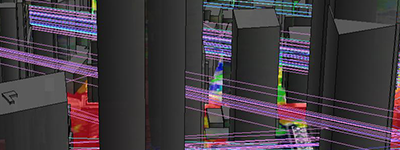Mission Critical networks are designed for high reliability, flexible demand and interoperability. To properly plan 5G, LTE-A, P25, TETRA, LMR and other public safety/first responder networks requires tools for analysis of performance as well as the standards set forth by 3GPP and TIA-TSB-88.
Detailed Interference Analysis
EDX planning tools have sophisticated interference analysis that provide you with realistic predictions of network performance. Parameters taken into consideration include:
- TSB-88 recommendation implementations
- Noise only, interference only, or noise + interference from prediction results or measurement data
- Power Spectral Density/Receive Filter definition
- Adjacent channel attenuation threshold adjustability
- Consecutive Point interference when operating in the same frequency as PMP systems
- Four-way interference for TDD systems (multipoint studies)
- Multipath
- Simulcast delay spread
Uplink Analysis
Mission Critical systems not only need to be able to talk out to the mobile and portable radios, but they need the ability to receive and decode the signals from mobiles and portables. The following are included in SignalPro:
- Field strength at best base from remote
- Received power at best base from remote
- Received voltage at best base from remote
- Bit error rate at best base from remote
- Areas with signal levels above both base and remote thresholds
- Number of base receivers with power above threshold
- Received power at best best voting receiver from remote
- Uplink Percent Log-Normal Reliability
- Uplink Percent Log-Normal Reliability using voting receiver
TSB-88
SignalPro provides TSB-88 studies including:
- TSB-88 Monte Carlo bounded area coverage
- TSB-88 Radius-of-operation overlap reliability
- Aggregate simulcast Monte Carlo reliability
- Simulcast delay spread using Hess’s calculation
Intermodulation
This included function shows how co-located transmitters might generate “nth” product interference. Detailed reports help the engineer proactively determine the need for on-site filters and/or circulators.
Map output
Export your study results to Google™ Earth, ESRI’s ArcView®, MapInfo® or image format to easily share with customers or colleagues.
Complete solution
Whether you’re planning a large area network, a backhaul system, or an indoor system for asset and personnel tracking, EDX provides tools to help you design the network with efficiency and reliability.
EDX provides licensing on a long-term or project basis along with high-resolution data for any service area.







